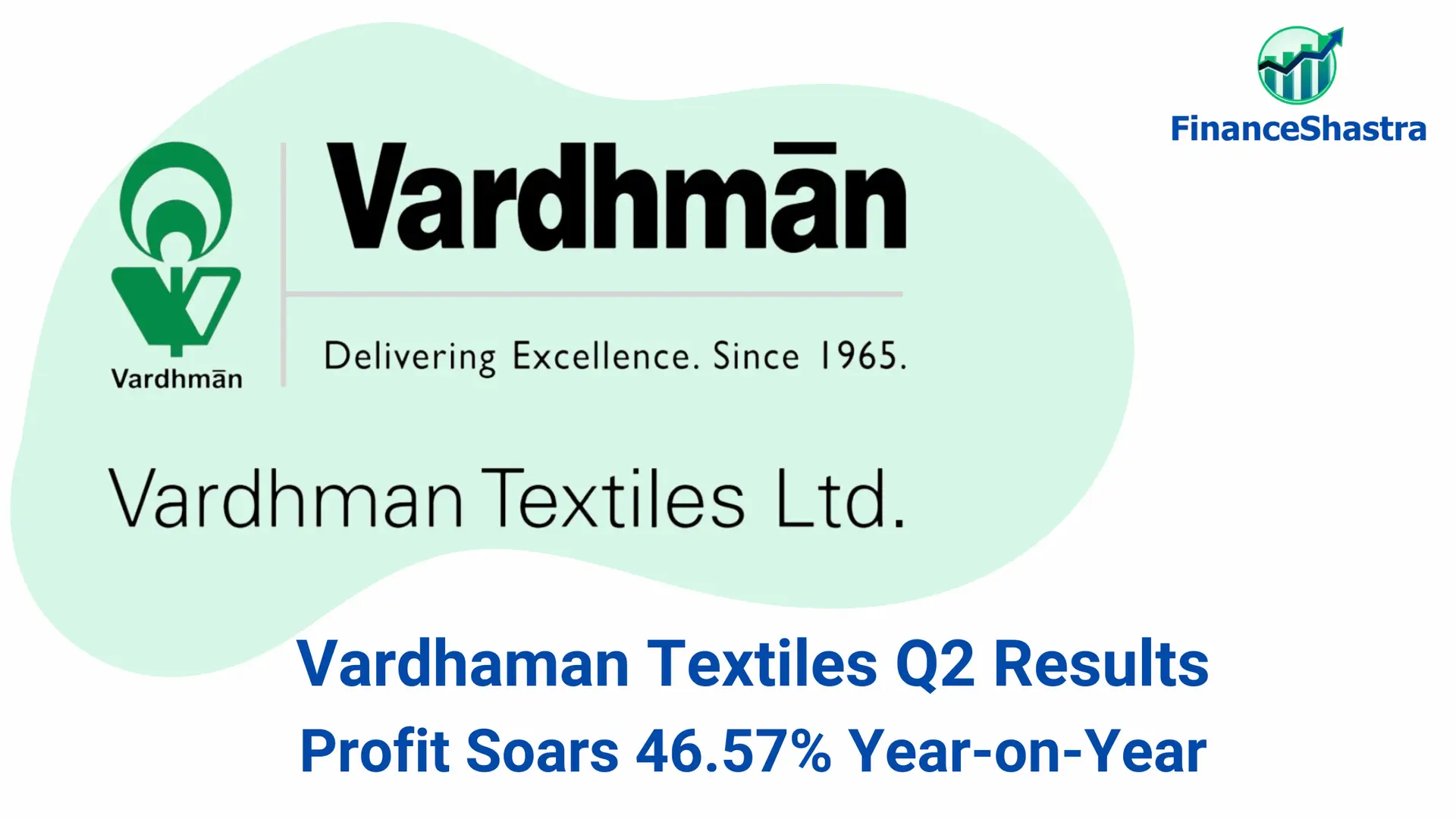Vardhaman Textiles Q2 Results: Profit Soars 46.57% Year-on-Year
Company Overview
Vardhman Textiles Ltd. is one of India’s largest textile manufacturers, recognized for its integrated operations in yarn, fabric, and garment production. Established in 1965 and headquartered in Ludhiana, Punjab, Vardhman has grown into a vertically integrated textile conglomerate with a diverse product range. The company caters to both domestic and international markets, supplying a variety of textile products to some of the world’s leading brands. The clientele lists are GAP, H&M, Walmart, Calvin Klein, Tommy Hilfiger, etc. It is presented in 57 countries.
Industry Outlook
The global textile market was valued at approximately $1 trillion in 2022 and is projected to grow at a CAGR of around 4.4%, reaching $1.35 trillion by 2027. Valued at around $150 billion in 2022, the Indian textile and apparel market is expected to reach $250 billion by 2025 at a CAGR of 10%. Increasing disposable incomes, e-commerce expansion, and demand from emerging markets drive this growth. Rising demand for apparel, home textiles, and technical textiles are also key contributors. Many global brands are shifting sourcing away from China to South Asian countries. India, Bangladesh, and Vietnam are key beneficiaries, with India’s textile exports to the US and EU increasing by over 15% annually. Challenges such as raw material price volatility and energy costs remain, necessitating efficient resource management and technology adoption for sustained growth.
Segment Information
- Yarn: Yarn segment includes ranges of specialised greige, dyed and recycled sustainable yarns in various materials like cotton, polyester, acrylic, viscose, and specialized fibres, along with blends. This diverse portfolio allows us to cater to a wide array of customer requirements. In this quarter Yarn segment earned revenue of ₹2454 crore. It sold about 68,461 metric tons of Yarn this quarter.
- Fabrics: We specialize in manufacturing fabrics suitable for tops, bottoms and outerwear across kids, men and women categories. Our capabilities extend to piece-dyed, yarn-dyed and printed fabrics, catering to both casual and formal wear. Our facilities feature a mix of advanced European and Japanese machinery and technologies, enabling us to handle a vast range of products from 60 GSM to 400 GSM.
- Garments: Vardhman Apparels outlook has always been to satisfy our customers with high quality shirts with our state of the art infrastructure and equipments accompanied by our innovative product that we offer our customers as a futuristic approach. To produce world class garments both for the international and domestic brands, offering wide range of products in all blends. It had earned revenue of ₹112 crore in FY24.
Quarterly Highlights
- Revenue of ₹2502 crore in Q2 FY25 up by 4.38% YoY from ₹2397 crore in Q2 FY24.
- EBITDA of ₹315 crore in this quarter at a moderate margin of 13% compared to 9% in Q2 FY24.
- Profit of ₹197 crore in this quarter compared to ₹136 crore in Q2 FY24.
Business Highlights
- Bangladesh is the second largest exporter player for India and even though there were issues with Bangladesh, the company’s sales or exports were not affected much and financials were remained at same levels.
- Cotton prices are at lower side of $0.6, and the company has exhausted its inventory so it has started buying cotton from market in Q1 and start of Q2 FY25 at lower prices.
- The EBITDA and profitability margins are in downward trend for many years and it is a negative signs as the company’s clients are reliable and strong, the sales are growing but the profits are remaining same.
Financial Summary and Ket Ratios

SWOT Analysis of Vardhaman Textiles
Strengths:
- Strong market position in the textile industry.
- Wide range of products.
- Focus on sustainability and eco-friendly practices.
Weaknesses:
- Fluctuating raw material prices.
- Limited B2C presence.
- Heavy reliance on exports.
Opportunities:
- Government incentives and support.
- Growth through e-commerce channels.
- Shifts in global supply chains.
Threats:
- Intense market competition.
- Economic downturns.
- Tightening environmental regulations.
- Currency exchange rate volatility.

